Hey Marc here,
I am doing astrophotography for years now out of bortle 6 and had many telescopes. My largest 12 inch Quattro from Skywatcher is my main worry atm.
Here is the problem: My flats do only work very randomly, depending on the sky I look at.
The following images are from the same night, with no moon and Ive used the same flats for both. The one where the flats are quite working was the blinking nebula which stands very high in the nightsky, where less lightpollition hitting my sensor. Captured with the red filter.
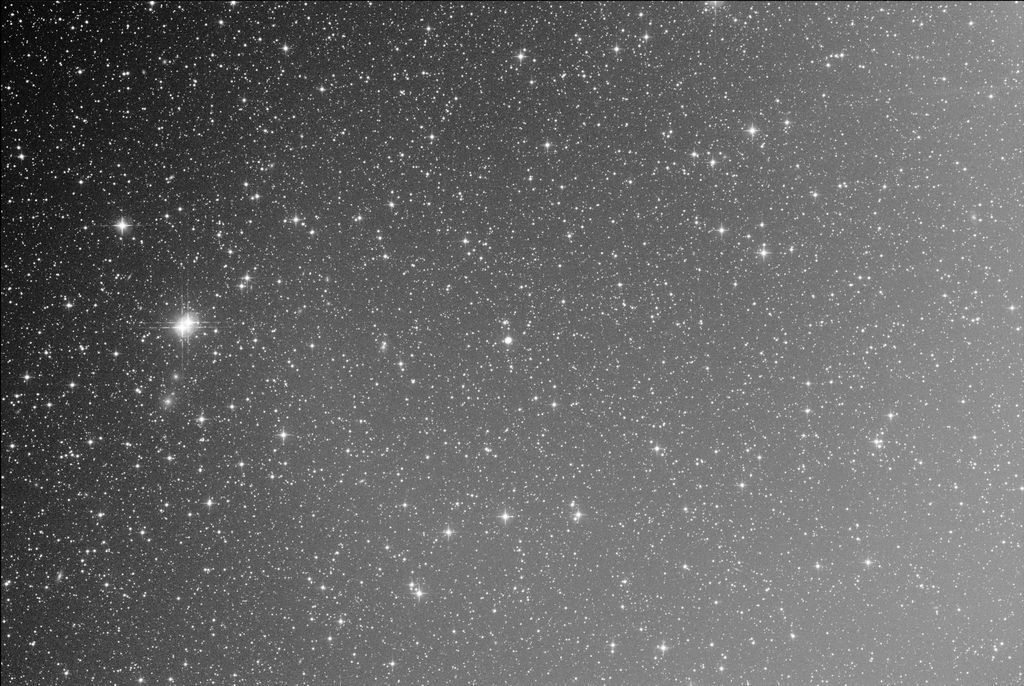
Now look at this: As I said, same night but only 2 hours later I capture this one. Again, same flats are used and also the red filter, except this one is right in the lightpollution
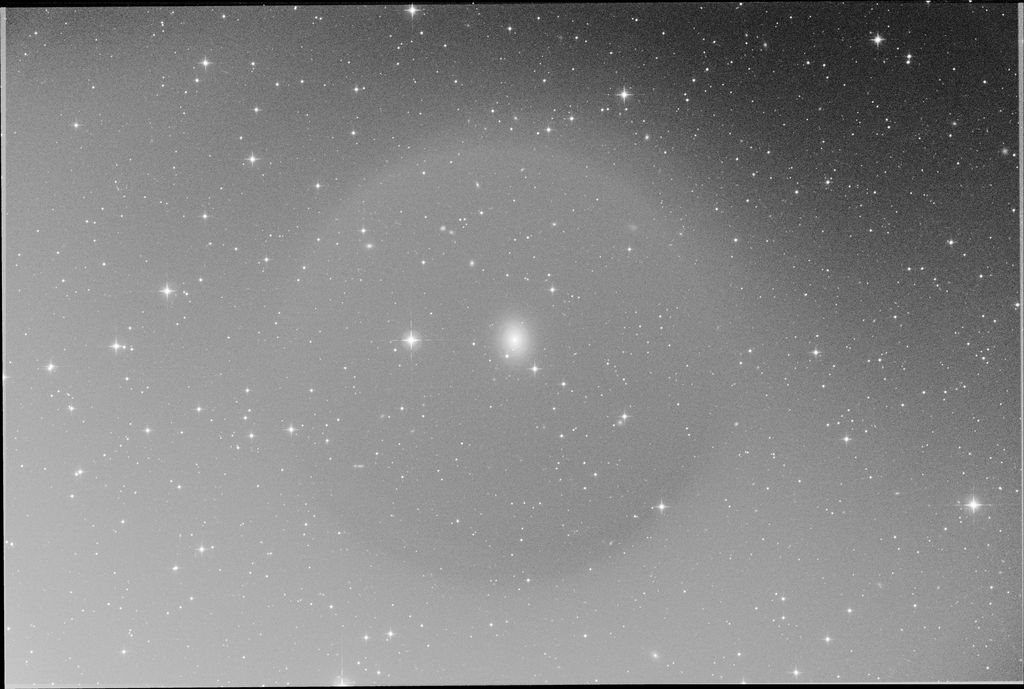
I can say that my newton is probalby the most lightleak proof tube out there. I checkt everything. Also there is no direct light hitting my tube.
I did captured a 3rd object that night, also low on the horizon. Same problem...
I used serveral different flat flieds, skyflats etc. Nothing works so far. I had an RC telescope with F5.5 no problems ever! This system runs with a starizona nexus so i got F3! Maybe that is the problem? Or just the lightpollution... Any one got an idea? Thanks!
|
You cannot like this item. Reason: "ANONYMOUS".
You cannot remove your like from this item.
Editing a post is only allowed within 24 hours after creating it.
You cannot Like this post because the topic is closed.
Marc, can you post a link to the master flat files you are using? What software are you calibrating with? (PI, APP, Siril?)
If you can put a few subs and the master flats, I'm happy to try running it through Astro Pixel and see if I can get a different result.
|
You cannot like this item. Reason: "ANONYMOUS".
You cannot remove your like from this item.
Editing a post is only allowed within 24 hours after creating it.
You cannot Like this post because the topic is closed.
Are you using darkflats or bias? When I moved to the Nexus, I had similar issues. I had issues on the corners mainly, and not the direct center circle that you have, but very similar.
What solved it for me (mostly) was adding a pedestal to the stack in WBPP. Don't ask me the technical stuff behind it, but basically what I was told is the bias and flats oversubtract, leaving the issue you see here. Try just a pedestal of 100 and see what it gets you. If it gets any better, you can add more. On a side note, my primary issue was in fact a light leak around my focuser, it was picking up the red light off my eq6r. That only solved half of it though, adding the pedestal solved the rest. Again, I didn't even know what adding a pedestal was all about until I picked up the nexus.
Make sure your bias frames are completely dark (put a sock in front of the coma corrector if you have to and take them at night). Ensure bias frames are at least 0.2 seconds. Once that is accomplished, add a pedestal of 100 into your process. If that doesn't fix, you've got a reflection or light leak. Or I guess you could still have a flat issue, but I doubt.
|
You cannot like this item. Reason: "ANONYMOUS".
You cannot remove your like from this item.
Editing a post is only allowed within 24 hours after creating it.
You cannot Like this post because the topic is closed.
Marc, it is very easy to make a flat file for your images. Even in a very pollution area.
When your equipment is ready and polar aligned, and your camera has the desired temperature, and gain and offset are correct when you use a CMOS sensor, take a image of the bright sky in the evening when de Sun is going down, you can take several images from the evening sky with a different exposure time, when the image looks good, that means not too dark and not too light or saturated, you can take more flat images. When the evening sky is too bright because there a little clouds, you can use a white T shirt to cover your telescope. On many websites flat field images are shown.
If you have still trouble with taken flats, don't hesisate to send a message to me.
I will sent a correct flat field image in mono, when I use a colour DSLR camera, I shoot always flats in the evening with several exposure time and it works very good. Many software programms create with several flat images a master flat.
|
You cannot like this item. Reason: "ANONYMOUS".
You cannot remove your like from this item.
Editing a post is only allowed within 24 hours after creating it.
You cannot Like this post because the topic is closed.
Brian Puhl:
Are you using darkflats or bias? When I moved to the Nexus, I had similar issues. I had issues on the corners mainly, and not the direct center circle that you have, but very similar.
What solved it for me (mostly) was adding a pedestal to the stack in WBPP. Don't ask me the technical stuff behind it, but basically what I was told is the bias and flats oversubtract, leaving the issue you see here. Try just a pedestal of 100 and see what it gets you. If it gets any better, you can add more. On a side note, my primary issue was in fact a light leak around my focuser, it was picking up the red light off my eq6r. That only solved half of it though, adding the pedestal solved the rest. Again, I didn't even know what adding a pedestal was all about until I picked up the nexus.
Make sure your bias frames are completely dark (put a sock in front of the coma corrector if you have to and take them at night). Ensure bias frames are at least 0.2 seconds. Once that is accomplished, add a pedestal of 100 into your process. If that doesn't fix, you've got a reflection or light leak. Or I guess you could still have a flat issue, but I doubt.
Hello Brain,
Thank you for answering!
I do use bias. I did fresh ones just to make sure, but I only use 0.0001 sec? I will try longer ones and dark flats.
I have never heard of pedastal. What is WBPP? I use Astro pixel processor for stacking, but I got pixinsight too. Is there a option in any of these programms? Tutorial?
I did everything to prevent light leak. I know that problem around the focuser, thats why I warped something around it and covered it with velours.
|
You cannot like this item. Reason: "ANONYMOUS".
You cannot remove your like from this item.
Editing a post is only allowed within 24 hours after creating it.
You cannot Like this post because the topic is closed.
Do you do sky flat or you use a flat panel?
Which camera do you use?
Which software do you use to capture the flats? NINA??
Good luck with your investigation!
|
You cannot like this item. Reason: "ANONYMOUS".
You cannot remove your like from this item.
Editing a post is only allowed within 24 hours after creating it.
You cannot Like this post because the topic is closed.
Brian Puhl:
Are you using darkflats or bias? When I moved to the Nexus, I had similar issues. I had issues on the corners mainly, and not the direct center circle that you have, but very similar.
What solved it for me (mostly) was adding a pedestal to the stack in WBPP. Don't ask me the technical stuff behind it, but basically what I was told is the bias and flats oversubtract, leaving the issue you see here. Try just a pedestal of 100 and see what it gets you. If it gets any better, you can add more. On a side note, my primary issue was in fact a light leak around my focuser, it was picking up the red light off my eq6r. That only solved half of it though, adding the pedestal solved the rest. Again, I didn't even know what adding a pedestal was all about until I picked up the nexus.
Make sure your bias frames are completely dark (put a sock in front of the coma corrector if you have to and take them at night). Ensure bias frames are at least 0.2 seconds. Once that is accomplished, add a pedestal of 100 into your process. If that doesn't fix, you've got a reflection or light leak. Or I guess you could still have a flat issue, but I doubt.
Hello Brain,
Thank you for answering!
I do use bias. I did fresh ones just to make sure, but I only use 0.0001 sec? I will try longer ones and dark flats.
I have never heard of pedastal. What is WBPP? I use Astro pixel processor for stacking, but I got pixinsight too. Is there a option in any of these programms? Tutorial?
I did everything to prevent light leak. I know that problem around the focuser, thats why I warped something around it and covered it with velours.
Yeah, again, I don't know all the science behind it. I suppose by taking longer bias, you're essentially taking a dark flat... but it's all the same to me. It's what fixed alot of my calibration issues in general, and I've stuck with it as gospel since.
WBPP - Weighted Batch Preprocessing in Pixinsight.
Here is my WBPP window showing where you add the pedestal (highlighted). I presume you can figure the rest out. If not, google is your friend.
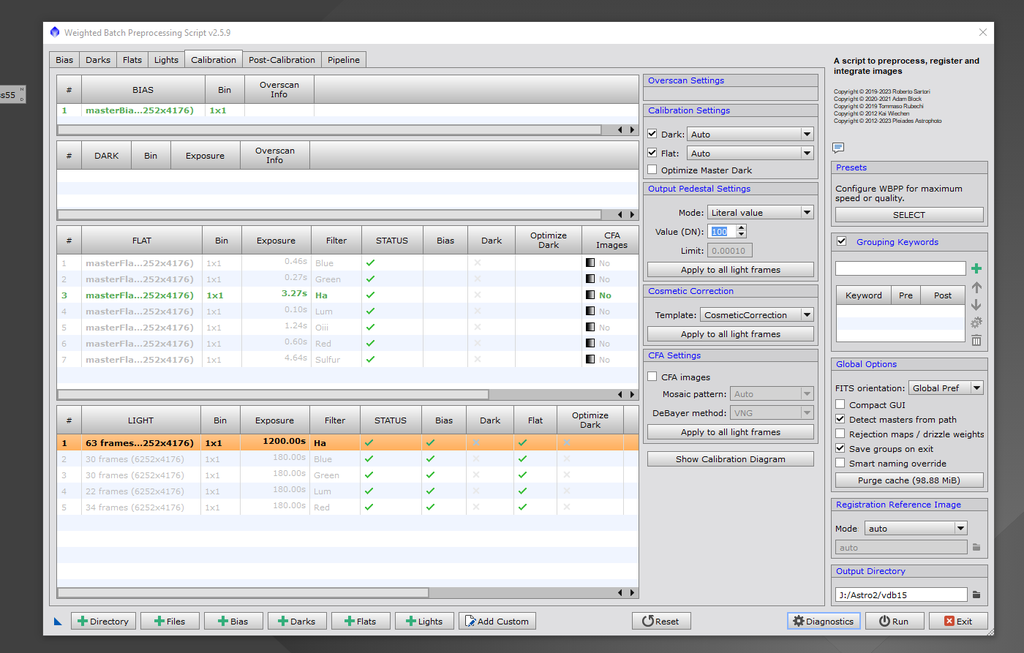 |
You cannot like this item. Reason: "ANONYMOUS".
You cannot remove your like from this item.
Editing a post is only allowed within 24 hours after creating it.
You cannot Like this post because the topic is closed.
|
You have a light leak somewhere. Are you capping the rear of the telescope during imaging time? One way to discover where the light leak originates from is as follows: Cover both ends hermetically with light proof material, use a collimating EP (generally known as cheshire) and look into it and see where you have a light leak. This should be performed in daylight. Also, direct light sources during flat times deeply affect results. Also, don't double-subtract bias when creating flats or processing the light frames.
|
You cannot like this item. Reason: "ANONYMOUS".
You cannot remove your like from this item.
Editing a post is only allowed within 24 hours after creating it.
You cannot Like this post because the topic is closed.
Marc V:
Do you do sky flat or you use a flat panel?
Which camera do you use?
Which software do you use to capture the flats? NINA??
Good luck with your investigation!
I tried both. Error is worst with a flatfield better with skyflats.
I use the Altair hypercam 26m apsc (Like the zwo 2600mm)
Nina yes and stacking in APP
|
You cannot like this item. Reason: "ANONYMOUS".
You cannot remove your like from this item.
Editing a post is only allowed within 24 hours after creating it.
You cannot Like this post because the topic is closed.
Hans Verheijen:
Marc, it is very easy to make a flat file for your images. Even in a very pollution area.
When your equipment is ready and polar aligned, and your camera has the desired temperature, and gain and offset are correct when you use a CMOS sensor, take a image of the bright sky in the evening when de Sun is going down, you can take several images from the evening sky with a different exposure time, when the image looks good, that means not too dark and not too light or saturated, you can take more flat images. When the evening sky is too bright because there a little clouds, you can use a white T shirt to cover your telescope. On many websites flat field images are shown.
If you have still trouble with taken flats, don't hesisate to send a message to me.
I will sent a correct flat field image in mono, when I use a colour DSLR camera, I shoot always flats in the evening with several exposure time and it works very good. Many software programms create with several flat images a master flat.
Hey Hans, yes I tried it many times, but it only works sometimes. Images captured directly out of the city will not work with skyflats too....
|
You cannot like this item. Reason: "ANONYMOUS".
You cannot remove your like from this item.
Editing a post is only allowed within 24 hours after creating it.
You cannot Like this post because the topic is closed.
andrea tasselli:
You have a light leak somewhere. Are you capping the rear of the telescope during imaging time? One way to discover where the light leak originates from is as follows: Cover both ends hermetically with light proof material, use a collimating EP (generally known as cheshire) and look into it and see where you have a light leak. This should be performed in daylight. Also, direct light sources during flat times deeply affect results. Also, don't double-subtract bias when creating flats or processing the light frames.
Hey Andrea, thank you for you help. I did this many times. I cant find anything that causes a light leak. My tube is completly covered. Even the focuser. I do skyflats when its a little bit bright out there and with a flat pannel when its completly dark.
|
You cannot like this item. Reason: "ANONYMOUS".
You cannot remove your like from this item.
Editing a post is only allowed within 24 hours after creating it.
You cannot Like this post because the topic is closed.
|
Well, then is more likely due to procedure. If you can share your calibrations and light shots then we can try to work it out...
|
You cannot like this item. Reason: "ANONYMOUS".
You cannot remove your like from this item.
Editing a post is only allowed within 24 hours after creating it.
You cannot Like this post because the topic is closed.
Nick Grundy:
Marc, can you post a link to the master flat files you are using? What software are you calibrating with? (PI, APP, Siril?)
If you can put a few subs and the master flats, I'm happy to try running it through Astro Pixel and see if I can get a different result.
Thanks for your help. here is a link: https://we.tl/t-lmMDZ15YNX
I am using APP only.
|
You cannot like this item. Reason: "ANONYMOUS".
You cannot remove your like from this item.
Editing a post is only allowed within 24 hours after creating it.
You cannot Like this post because the topic is closed.
andrea tasselli:
Well, then is more likely due to procedure. If you can share your calibrations and light shots then we can try to work it out...
*** Yes maybe. But I tried so many things.. I will capture without a dewcap this night and reduce the ampterure of the nexus corrector. Maybe this causes a a problem. You can find my data uploaded in the comments somewhere. Thanks!!
|
You cannot like this item. Reason: "ANONYMOUS".
You cannot remove your like from this item.
Editing a post is only allowed within 24 hours after creating it.
You cannot Like this post because the topic is closed.
*** Yes maybe. But I tried so many things.. I will capture without a dewcap this night and reduce the ampterure of the nexus corrector. Maybe this causes a a problem. You can find my data uploaded in the comments somewhere. Thanks!!
Your flats are 5.66s long but there is no matching flatdarks. Do you happen to have them?
|
You cannot like this item. Reason: "ANONYMOUS".
You cannot remove your like from this item.
Editing a post is only allowed within 24 hours after creating it.
You cannot Like this post because the topic is closed.
andrea tasselli:
*** Yes maybe. But I tried so many things.. I will capture without a dewcap this night and reduce the ampterure of the nexus corrector. Maybe this causes a a problem. You can find my data uploaded in the comments somewhere. Thanks!!
Your flats are 5.66s long but there is no matching flatdarks. Do you happen to have them?
*Oh i forgt. You can find it here: https://we.tl/t-xHk6plZLQM |
You cannot like this item. Reason: "ANONYMOUS".
You cannot remove your like from this item.
Editing a post is only allowed within 24 hours after creating it.
You cannot Like this post because the topic is closed.
When the primary shifts slightly when the scope is being pointed in a different direction my 200PDS (have heard others as well) can get a ring artifact for example.
After I duck taped the back of the primary to the mirror cell i never had issues again, this also improved images since the "differential flexure" compared to what the guide scope was seeing was eliminated as well.
|
You cannot like this item. Reason: "ANONYMOUS".
You cannot remove your like from this item.
Editing a post is only allowed within 24 hours after creating it.
You cannot Like this post because the topic is closed.
So, I've check what you made available and carried out few tests. The results so far:
1. Apparently (since you processed those I can only relay on what APP writes on the header) both bias and dark have a zero offset while all the others have 100, Gain seems the same (100).
2. The isophotes of the flats and lights are different (the ratios between max and min values is 1.682 for the lights and 1.759 for the flat) so potentially you are undercorrecting, at least at the corners, and overcorrecting in the middle, see below.
Flat Isophote:
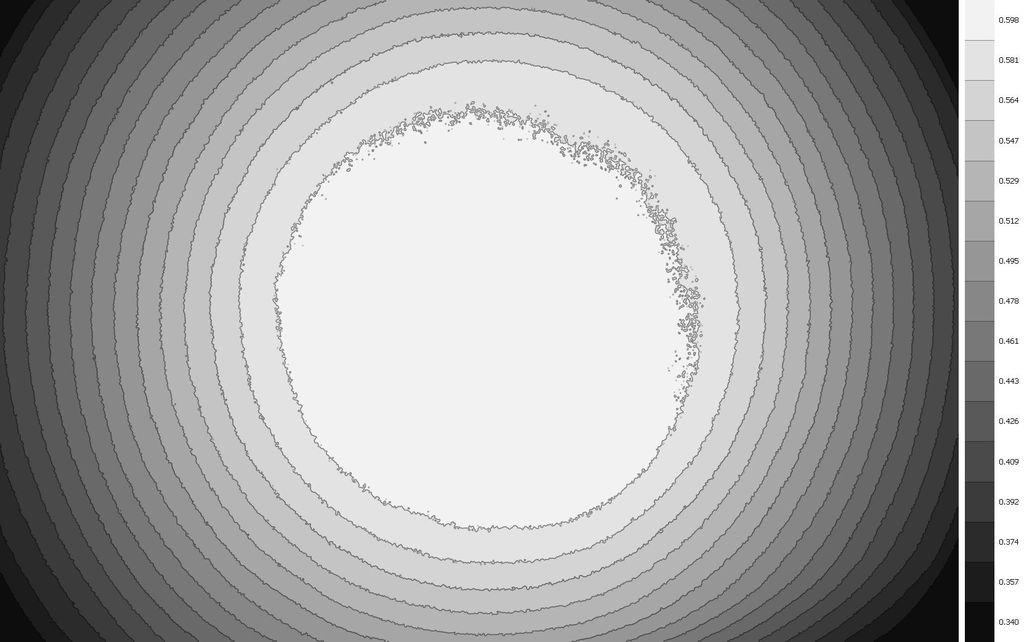
Light Isophote:
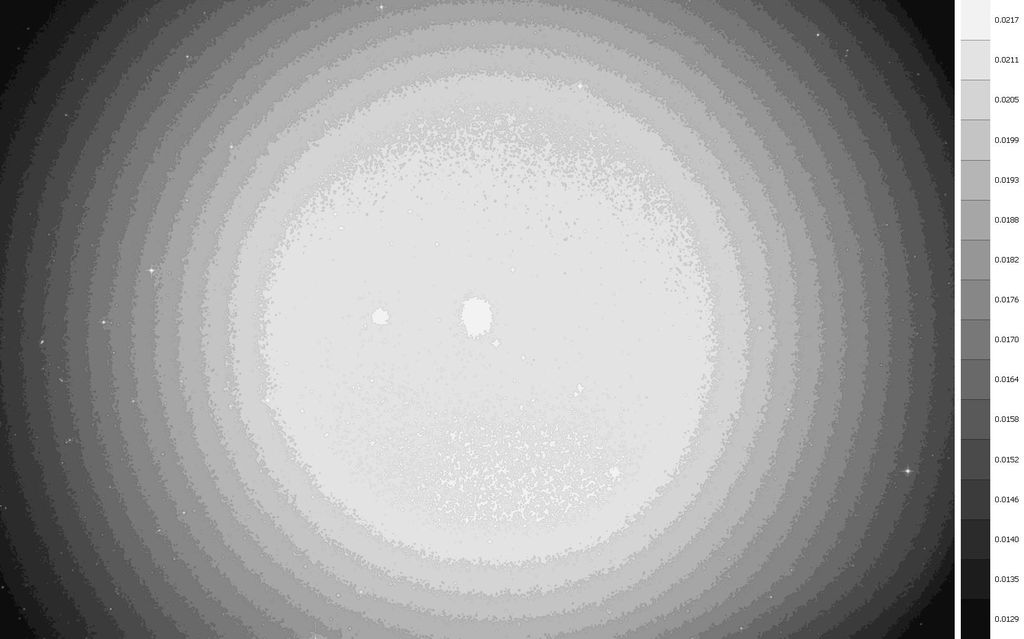
3. The residual (1st iteration) is quite significant and it is a mix between that of the flattening operation and the light pollution, which I assume is quite significant in your locale:

4. By comparing the 2 isophotes above it can be seen that a shift has occured, potentially indicating mirror shifting (or camera, for what matters) between the two instances.
5. You have very significant light drop at the corners, of the order of 40%, which isn't good and clearly indicates that the illumination with the Nexus isn't great and you'll be dealing with noise issues unless you crop off the corners (about 15% either sides at least).
6. You also have significant light pollution and I'd venture to suggest that a LP filter ahead of the FW would improve things quite a bit, both in the final results and in the flattening of the lights. Note that significant light pollution worsen field flattening, especially at low focal ratios (e.g., f/3 like you have here).
After all is said and done I managed to get a decent image after all but with significant use of the flattening tools in PI:
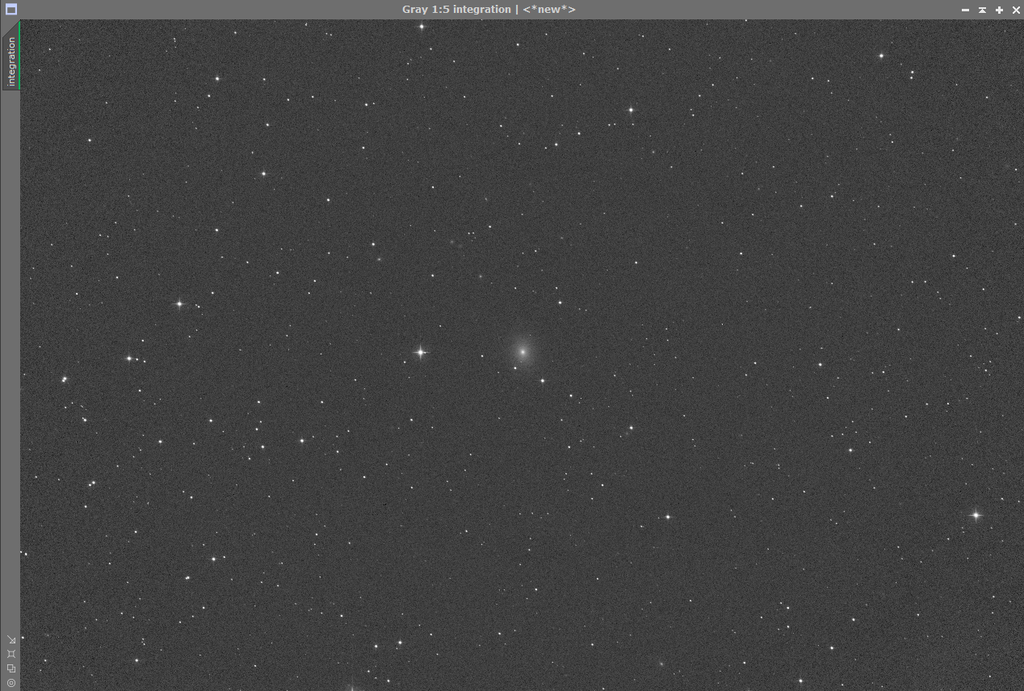 |
You cannot like this item. Reason: "ANONYMOUS".
You cannot remove your like from this item.
Editing a post is only allowed within 24 hours after creating it.
You cannot Like this post because the topic is closed.
andrea tasselli:
So, I've check what you made available and carried out few tests. The results so far:
1. Apparently (since you processed those I can only relay on what APP writes on the header) both bias and dark have a zero offset while all the others have 100, Gain seems the same (100).
2. The isophotes of the flats and lights are different (the ratios between max and min values is 1.682 for the lights and 1.759 for the flat) so potentially you are undercorrecting, at least at the corners, and overcorrecting in the middle, see below.
Flat Isophote:

Light Isophote:

3. The residual (1st iteration) is quite significant and it is a mix between that of the flattening operation and the light pollution, which I assume is quite significant in your locale:

4. By comparing the 2 isophotes above it can be seen that a shift has occured, potentially indicating mirror shifting (or camera, for what matters) between the two instances.
5. You have very significant light drop at the corners, of the order of 40%, which isn't good and clearly indicates that the illumination with the Nexus isn't great and you'll be dealing with noise issues unless you crop off the corners (about 15% either sides at least).
6. You also have significant light pollution and I'd venture to suggest that a LP filter ahead of the FW would improve things quite a bit, both in the final results and in the flattening of the lights. Note that significant light pollution worsen field flattening, especially at low focal ratios (e.g., f/3 like you have here).
After all is said and done I managed to get a decent image after all but with significant use of the flattening tools in PI:

Wow! Amazing work!!! Thank you so much for your time figure things out. I am going to image this night with the L filter. I adjust a few things and will try it out by myself. I know I'm asking a lot, but if I have another problem, can you check it again using your method?
|
You cannot like this item. Reason: "ANONYMOUS".
You cannot remove your like from this item.
Editing a post is only allowed within 24 hours after creating it.
You cannot Like this post because the topic is closed.
Wow! Amazing work!!! Thank you so much for your time figure things out. I am going to image this night with the L filter. I adjust a few things and will try it out by myself. I know I'm asking a lot, but if I have another problem, can you check it again using your method?
Sure. No problem at all.
|
You cannot like this item. Reason: "ANONYMOUS".
You cannot remove your like from this item.
Editing a post is only allowed within 24 hours after creating it.
You cannot Like this post because the topic is closed.
Hey Marc here,
I can say that my newton is probalby the most lightleak proof tube out there. I checkt everything. Also there is no direct light hitting my tube.
I did captured a 3rd object that night, also low on the horizon. Same problem...
I used serveral different flat flieds, skyflats etc. Nothing works so far. I had an RC telescope with F5.5 no problems ever! This system runs with a starizona nexus so i got F3! Maybe that is the problem? Or just the lightpollution... Any one got an idea? Thanks!
Clearly you have a light leak tho, i hate to say it, but it is. Try looking again, even the most subtle leak can cause this.
i am speaking from personal experience here! Check the focuser in particular
|
You cannot like this item. Reason: "ANONYMOUS".
You cannot remove your like from this item.
Editing a post is only allowed within 24 hours after creating it.
You cannot Like this post because the topic is closed.
When you have high light pollution, it is not easy for a telescope to be completely secured from stray light.
Have a look here:
https://diffractionlimited.com/flat-fields-stray-light-amateur-telescopes/ |
You cannot like this item. Reason: "ANONYMOUS".
You cannot remove your like from this item.
Editing a post is only allowed within 24 hours after creating it.
You cannot Like this post because the topic is closed.
|
andrea said "both bias and dark have a zero offset" and I think that's probably the main issue, no? In my experience you need same offset and gain for all calibration images...
|
You cannot like this item. Reason: "ANONYMOUS".
You cannot remove your like from this item.
Editing a post is only allowed within 24 hours after creating it.
You cannot Like this post because the topic is closed.
Pablo Gazmuri:
andrea said "both bias and dark have a zero offset" and I think that's probably the main issue, no? In my experience you need same offset and gain for all calibration images...
Yes probably is needed, but if the bias is not matching the flats for example, you would experience an over or under correction of the flats. While this may or may not be present here, there is also the light leak like reflection feature.
|
You cannot like this item. Reason: "ANONYMOUS".
You cannot remove your like from this item.
Editing a post is only allowed within 24 hours after creating it.
You cannot Like this post because the topic is closed.
|
The master flat I have used was calibrated using only the darkflats, both of which had the same gain and offset. So it wasn't that for sure. Even if the offset was 0 for the master dark it would have reduced the mean background a little bit further, that is if the pedestal wasn't removed in creating the said master dark beforehand. Overall I couldn't find conclusive proof that this issue was responsible for the main issue. In my view, a light leak from the focuser seems the most likely culprit, with other potential candidates are non-perfectly blackened parts of the image train.
|
You cannot like this item. Reason: "ANONYMOUS".
You cannot remove your like from this item.
Editing a post is only allowed within 24 hours after creating it.
You cannot Like this post because the topic is closed.
to create to post a reply.










